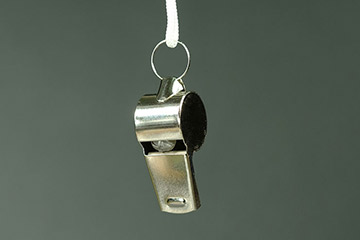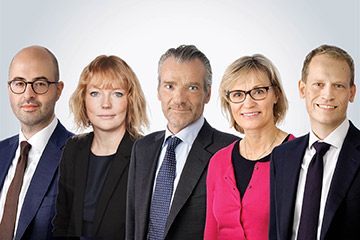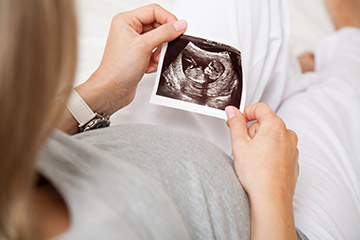Is your company ready for the new rules regarding earmarked parental leave?
27 June 2022
The Act on Amendment of the Danish Rules regarding Maternity/Paternity/Parental Leave was adopted on 3 March 2022 and entered into force on 1 July 2022 and is applicable to children born or received by its adoptive parents on 2 August 2022 or later. The new rules introduce, inter alia, earmarked leave and an equal division of the right to maternity/paternity benefits after the birth of the child. The amendment implements the provisions of the EU Directive 2019/1158 on work-life balance for parents and carers. The amendments reflect the intention to create more equality between the parents' rights to leave of absence.
The amendments introduce more changes where the rules regarding earmarked leave are the most crucial.
After the amendment of the Act, the total number of weeks of leave and the right to maternity/paternity benefits remains unchanged. This means that after the birth of the child, the parents still have the right to altogether 48 weeks of leave with maternity/paternity benefits, provided that the employment requirements in the Danish Childbirth Act are fulfilled. Also, the mother will still be entitled to leave with maternity benefits for a period of four weeks before the expected date of birth.
The new rules introduce an equal division of the 48 weeks with maternity/paternity benefits after the birth of the child. Both parents have thus a general right to take 24 weeks of leave each with maternity/paternity benefits.
The right to 24 weeks of leave with maternity/paternity benefits is divided as follows:
During the first 10 weeks following the birth of the child, two weeks out of the mother's 10 weeks with maternity benefits are earmarked. During the same period, two weeks are also earmarked for the father/the co-mother. After 10 weeks following the birth of the child, the mother is entitled to further 14 weeks of leave with maternity benefits, nine of which are earmarked. Out of the 24 weeks of leave with paternity benefits, the father/the co-mother has 22 weeks left, nine of which are also earmarked.
This entails that an aggregate of 11 weeks of leave with maternity/paternity benefits are earmarked for each of the parents. This means that the earmarked weeks cannot be transferred to the other parent. Basically, the earmarked leave must be held before the child reaches the age of one year. If the leave is not taken, it will be forfeited. On the other hand, both parents may freely transfer all or some of the remaining 13 weeks with maternity/paternity benefits to each other.
Special rules apply to self-employed persons, students, or unemployed persons. Also, special rules apply to adoptive parents. However, as a general rule, adoptive parents are also entitled to 24 weeks of leave each with maternity/paternity benefits after having received the child at home.
The right to take leave of absence as such still stretches beyond the period of leave with the right to receive maternity/paternity benefits. 10 weeks after childbirth, the parents are entitled to altogether 32 weeks' parental leave each. This means a total of 64 weeks of parental leave, notwithstanding the fact that the right to maternity/paternity benefits for this period covers 36 weeks altogether (basically, divided into 14 weeks to the mother and 22 weeks to the father/co-mother).
The new Act also contains changes regarding the rules on prior notification, the possibilities to postpone the leave, etc.
On 1 December 2023, new rules will enter into force for single parents and LGBT+ parents and will be applicable to children born or received on 1 January 2024 or later. These new rules will allow the transfer of non-earmarked leave to others than just the child's other parent.
With the purpose of easing the practical application of the new rules, the Danish Agency for Labour Market and Recruitment has on the 10 May 2022 released guidelines regarding the new rules on maternity/paternity/parental leave. The guidelines contain a thorough survey of the new rules and the practical application hereof.
It is important that the new rules on maternity/paternity/parental leave are correctly reflected in the companies' employment contracts and/or their maternity/paternity/parental policy. Presently, many companies are also considering changing their maternity/paternity/parental policy with the purpose of creating equal rights between the parents, especially with regard to the right to equal payment during the absence after childbirth or adoption.
After the amendment of the Act, the total number of weeks of leave and the right to maternity/paternity benefits remains unchanged. This means that after the birth of the child, the parents still have the right to altogether 48 weeks of leave with maternity/paternity benefits, provided that the employment requirements in the Danish Childbirth Act are fulfilled. Also, the mother will still be entitled to leave with maternity benefits for a period of four weeks before the expected date of birth.
The new rules introduce an equal division of the 48 weeks with maternity/paternity benefits after the birth of the child. Both parents have thus a general right to take 24 weeks of leave each with maternity/paternity benefits.
The right to 24 weeks of leave with maternity/paternity benefits is divided as follows:
During the first 10 weeks following the birth of the child, two weeks out of the mother's 10 weeks with maternity benefits are earmarked. During the same period, two weeks are also earmarked for the father/the co-mother. After 10 weeks following the birth of the child, the mother is entitled to further 14 weeks of leave with maternity benefits, nine of which are earmarked. Out of the 24 weeks of leave with paternity benefits, the father/the co-mother has 22 weeks left, nine of which are also earmarked.
This entails that an aggregate of 11 weeks of leave with maternity/paternity benefits are earmarked for each of the parents. This means that the earmarked weeks cannot be transferred to the other parent. Basically, the earmarked leave must be held before the child reaches the age of one year. If the leave is not taken, it will be forfeited. On the other hand, both parents may freely transfer all or some of the remaining 13 weeks with maternity/paternity benefits to each other.
Special rules apply to self-employed persons, students, or unemployed persons. Also, special rules apply to adoptive parents. However, as a general rule, adoptive parents are also entitled to 24 weeks of leave each with maternity/paternity benefits after having received the child at home.
The right to take leave of absence as such still stretches beyond the period of leave with the right to receive maternity/paternity benefits. 10 weeks after childbirth, the parents are entitled to altogether 32 weeks' parental leave each. This means a total of 64 weeks of parental leave, notwithstanding the fact that the right to maternity/paternity benefits for this period covers 36 weeks altogether (basically, divided into 14 weeks to the mother and 22 weeks to the father/co-mother).
The new Act also contains changes regarding the rules on prior notification, the possibilities to postpone the leave, etc.
On 1 December 2023, new rules will enter into force for single parents and LGBT+ parents and will be applicable to children born or received on 1 January 2024 or later. These new rules will allow the transfer of non-earmarked leave to others than just the child's other parent.
With the purpose of easing the practical application of the new rules, the Danish Agency for Labour Market and Recruitment has on the 10 May 2022 released guidelines regarding the new rules on maternity/paternity/parental leave. The guidelines contain a thorough survey of the new rules and the practical application hereof.
It is important that the new rules on maternity/paternity/parental leave are correctly reflected in the companies' employment contracts and/or their maternity/paternity/parental policy. Presently, many companies are also considering changing their maternity/paternity/parental policy with the purpose of creating equal rights between the parents, especially with regard to the right to equal payment during the absence after childbirth or adoption.






